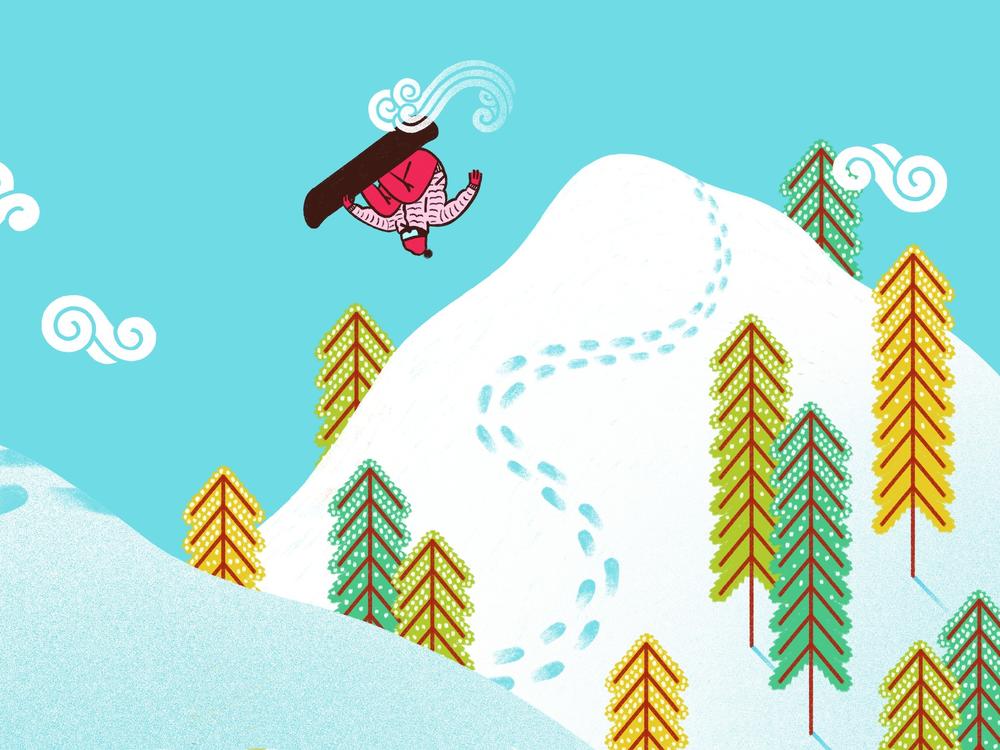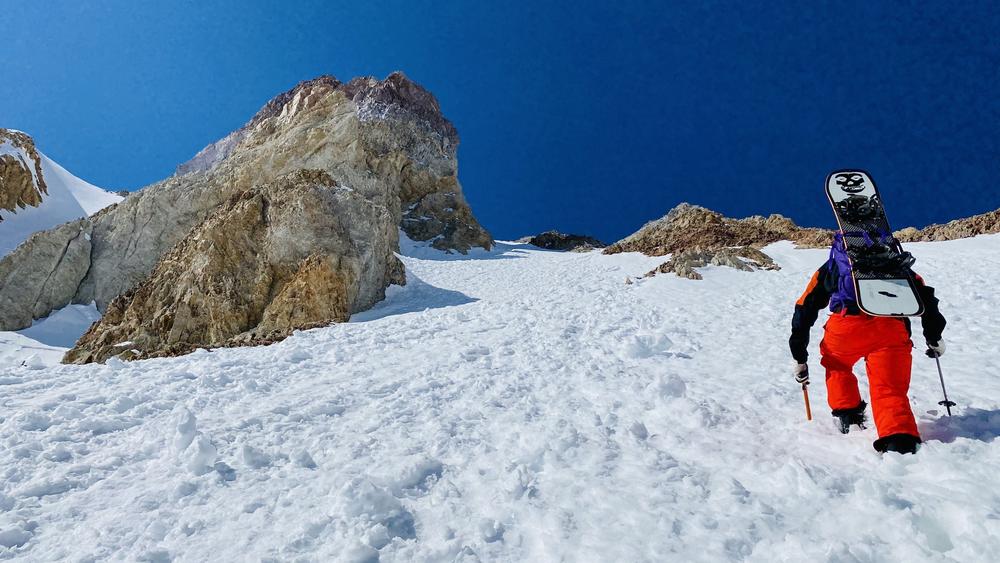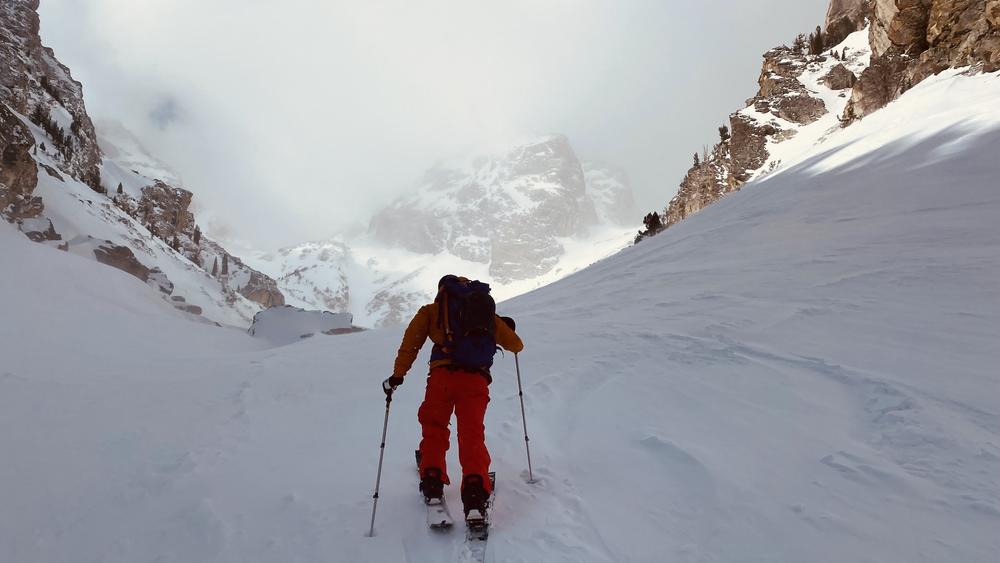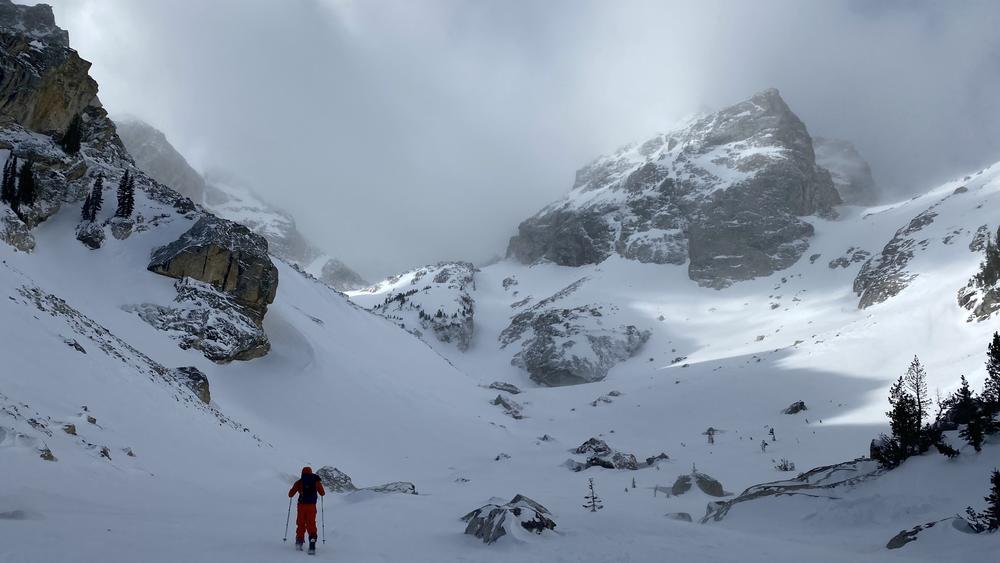Section Branding
Header Content
A guide to the present moment: Finding (and losing) yourself backcountry snowboarding
Primary Content
My favorite thing to do in the world is backcountry snowboarding — journeying into the untamed wilderness of alpine hinterlands and gliding down mountains, far from the manicured slopes, lifts, and crowds of ski resorts.
Every trip into the backcountry is an adventure into the splendors of nature. Treks take you through evergreen forests, past flowing creeks and frozen lakes. The smell of pine wafts through the air. Looking up, you can see jagged peaks that look like sculptures shaped by the divine. The blowing wind can sound as if it's playing the mountains and trees like instruments in a symphony.
The calm. The peace. The serenity. Everything is more placid and beautiful when caked in fresh snow.
While riding epic lines is the ultimate goal in this sport, the truth is only about 5% of backcountry snowboarding is actually snowboarding.
The other 95% is what it takes to get you there.
Sure, it's possible to access some backcountry zones using noisy snowmobiles or helicopters. But the purest version of the sport — and the one I'm talking about — requires mountaineering.
You have your work cut out for you
Instead of being whisked up a mountain by a machine, you do the hard work of reaching the peak yourself. Which is why most of the time you're hiking and climbing, not snowboarding.
Typically, you hike using a splitboard, or a snowboard that splits into two skis. You put climbing skins on the skis, which give the skis traction on the snow. The motion of moving forward with skis and poles is a bit like using an elliptical. When it gets too steep to ascend in ski mode, you strap the board to your back and "bootpack" up the mountain, kicking your boots into the snow and climbing a mountain's face as if walking up steep stairs. In icy conditions, you may need to use crampons, which are spikes that lock onto the bottom of your boots to give you extra traction.
At the start of each journey, the peak beckons from a distance. It can be a slog to reach it, but the climb offers the opportunity to unplug and reflect. You're often alone with your thoughts for hours at a time, taking in the scenery.
With exertion and sweat, you're soon triumphantly standing atop the mountain. Reaching the peak brings a sense of achievement — and a moment to take in a stunning 360-degree view of a gorgeous winterscape, glistening in the sun.
I've had spine-tingling experiences out there; experiences I'll remember for the rest of my life. Like traveling through the majestic, snow-capped peaks of Grand Teton National Park, or finding myself deep in rural Hokkaido, standing with my friend Jake on a mountain with a spectacular view of the Sea of Japan.
And then you're ready for the big drop
Like a dog drooling before a feast, I have a Pavlovian response to clipping the two skis together, forming my vehicle for surfing down the mountain.
As I drop, I feel pure euphoria as gravity begins to propel me. The endorphins are still pumping from the climb, and now the mountain is delivering a dose of adrenaline and dopamine. It's a natural cocktail that beats any man-made drug.
All my stresses and problems whiz away, as if blown off by the howling wind as I blast down the mountain.
The mountain's face becomes a canvas for arching turns. Snow-covered boulders, fallen trees, and cliffs become launching pads for flight. Conceptions of the past and future leave my mind, and I'm just purely experiencing what's in front of me.
Pro snowboarder Jeremy Jones — the closest thing the sport has to what you might call a philosopher — has referred to it as "the idiot's guide to the present moment." The late psychologist Mihaly Csikszentmihalyi would call it a "flow state."
The labor is what makes the riding so exceptional
The descent is made all the more special by all the work you had to put in. The work is about more than just climbing. There's also all the mental preparation it takes to do this sport safely and responsibly. Since I wholeheartedly embraced this sport several years ago, I've put hundreds of hours into taking avalanche courses, reading books on snow science, and poring over topographical maps, weather forecasts, and daily reports about the snowpack from local avalanche centers.
Riding a steep slope without doing your homework can literally cost you your life. Mindless adrenaline junkies do not last long in this sport. It must be done with diligence, humility, and a willingness to always turn back if the conditions aren't right.
Backcountry snowboarding has proven to be my portal to fully immersing myself in the outdoors. For years I have lived in major cities, and for a long time I didn't really camp or backpack. I didn't even like the idea of leaving civilization and going days without creature comforts.
Now I relish the excitement of heading out into the wilderness with my splitboard and a hulking backpack, filled with a sub-zero sleeping bag, a winter tent, and everything I'll need to survive. Searching for lines to ride is only part of my motivation — it's about the entire journey.
Like I said, backcountry snowboarding is only 5% actual snowboarding. But the rest is what makes the riding so extraordinary.
What are you really into? Fill out this form or leave us a voice note at 800-329-4273, and part of your submission may be featured online or on the radio.
Copyright 2023 NPR. To see more, visit https://www.npr.org.




